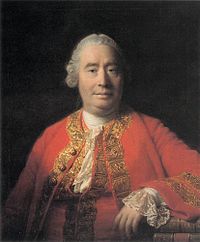
Photo from wikipedia
Aristotle’s suggestion that we can equally reason from our current beliefs to action as we can to a new belief (EN 1147a26-31; DMA 701a18-23) finds support from a number of… Click to show full abstract
Aristotle’s suggestion that we can equally reason from our current beliefs to action as we can to a new belief (EN 1147a26-31; DMA 701a18-23) finds support from a number of important philosophers during the second half of the twentieth century, most notably Anscombe (1965), Davidson (1970), and von Wright (1972). Their actionalist conceptions of practical reasoning have, more recently, been subjected to push-back in the form of cognitivist and intentionalist alternatives, according to which practical reasoning is respectively said to result in a belief about what one ought to do (Raz 2011, Ch.7), or an intention to act in a certain way (Broome 2013, Ch.14). In Practical Shape, Jonathan Dancy builds on some of his earlier work to mount an original and sophisticated defence of actionalism that is “sensitive to current debates but still Aristotelian in spirit”, as the blurb on the dust cover puts it. Nobody denies that we can reason about what to do just as easily as we can reason about what to think (perhaps even more so). One could nontheless allow that reasoning might be practical in its subject (action) while denying the actionalist claim that it is practical in its issue (belief), to use a distinction from Davidson to which I shall later return. On such a view, practical reasoning issues in beliefs about what one ought to do, and is thus no different to theoretical reasoning in terms of the kind of output it results in. A prima facie worry with this outlook is that it seems committed to holding that reasoning about what to believe is, by analogy, reasoning to a belief about what one ought to believe. Yet it is implausible to think that all theoretical reasoning results in such meta-belief. We would do better, I propose, to distinguish between what we are trying to figure out in reasoning (viz., what it is that we should think or do) from the end product of reasoning gone well (viz., our believing or acting accordingly). If these two things sound identical to you, read on. So far, I have managed to avoid using the term “conclusion”, even though the abovementioned debates are typically cast in terms of whether or not the conclusion of a practical syllogism is an action. Dancy argues, persuasively, that this is an unfortunate way of thinking about things, since conclusions are things that we can draw or infer, and it makes no sense to talk of drawing or inferring actions (34–5). What about belief? Dancy argues, inter alia, that when we reason to belief, our reasoning does not result in a thing believed (e.g. that your mother was a hamster) but, rather, in our believing it. We cannot draw or infer such believings any more than we can actions. If reasoning “concludes” in action, intention,
Journal Title: Philosophical Explorations
Year Published: 2020
Link to full text (if available)
Share on Social Media: Sign Up to like & get
recommendations!